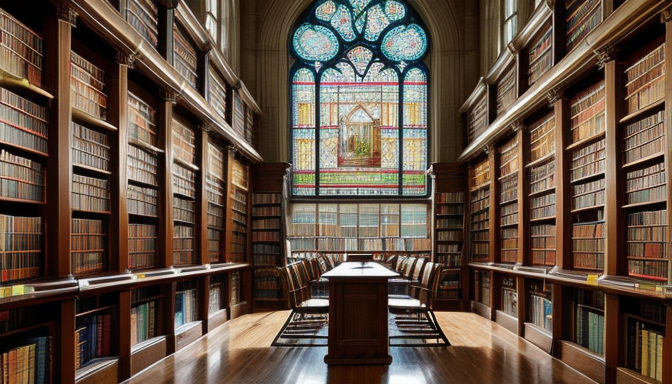This article explores how various literary movements are interlinked, examining their influences, overlaps, and the evolution of themes across different periods in literature.
Historical events often shape literary movements, providing a backdrop that influences writers’ perspectives and styles. For instance, the Romantic movement emerged as a reaction to the Industrial Revolution, celebrating nature and individual emotion in stark contrast to the mechanization of life. This historical context not only influenced the themes explored in literature but also how writers expressed their thoughts and feelings. It’s fascinating to see how the social upheavals of a time can ignite a creative spark, leading to significant shifts in literary expression throughout time. Just think about how wars have inspired countless novels and poems, from the somber reflections of World War I to the heroic tales of resistance during World War II. Each movement, like a ripple in a pond, influences the next, creating a rich tapestry of interconnected ideas.
Literary movements frequently interact, borrowing themes and techniques from one another. This cross-pollination enriches the literary landscape and fosters innovation among writers across different genres and eras. For instance, the Modernist movement drew heavily on the impressionistic techniques of the preceding Realists, yet it pushed boundaries further by experimenting with form and structure. It’s like a chef who takes a classic recipe but adds a twist, creating something entirely new yet familiar. The way these movements overlap can be truly surprising, revealing how interconnected our literary heritage really is. Whether it’s the symbolism of the Symbolists inspiring the Surrealists, or the existential themes of the Existentialists resonating with today’s writers, the dialogue between movements is ongoing and dynamic.
The Influence of Historical Context
Have you ever wondered how the backdrop of historical events shapes the literature we read? It’s like a canvas where writers paint their thoughts, influenced by the world around them. From wars and revolutions to social movements, the historical context provides a fertile ground for writers to cultivate their ideas. For instance, the Romantic movement emerged in response to the Industrial Revolution, highlighting a yearning for nature and emotion amid the chaos of modernization.
Each literary movement is a reaction to the societal climate of its time. Think of it as a conversation across generations. For example, the Modernist movement arose after World War I, reflecting disillusionment and a break from traditional forms. Writers like T.S. Eliot and Virginia Woolf experimented with structure and style, mirroring the fragmented reality of their era. This interplay between history and literature is not just fascinating; it’s essential to understanding how themes evolve.
To illustrate this connection, consider the following table that outlines key literary movements and their historical contexts:
| Literary Movement | Historical Context |
|---|---|
| Romanticism | Industrial Revolution |
| Modernism | Post World War I |
| Postmodernism | Cold War Era |
In conclusion, the influence of historical context on literary movements is profound. It’s a reminder that literature is not created in a vacuum; it’s a reflection of the times, capturing the struggles, triumphs, and transformations of society. So, the next time you dive into a book, take a moment to consider the world that shaped its creation!

Cross-Pollination of Ideas
Literature is like a vibrant tapestry, woven from the threads of various literary movements that have influenced one another over the centuries. Imagine walking through a bustling marketplace where ideas are traded as freely as spices. This cross-pollination of themes and techniques has not only enriched individual works but has also created a dynamic literary landscape that evolves with time.
Take, for instance, the Romantic period and its impact on the Modernist movement. Romantic poets like Wordsworth and Coleridge emphasized emotion and nature, laying a foundation that Modernists would later challenge. Yet, they borrowed the idea of introspection, leading to a fascinating blend of personal and societal themes. This interaction is akin to a dance, where each partner influences the other’s steps, creating a rhythm that captivates the audience.
Moreover, the exchange of ideas often happens in unexpected ways. For example, the Beat Generation drew inspiration from earlier movements such as Surrealism and Transcendentalism, infusing their works with a sense of spontaneity and a quest for deeper meaning. This synergy can be illustrated in the following table:
| Literary Movement | Influences | Key Themes |
|---|---|---|
| Romanticism | Nature, Emotion | Individualism, Imagination |
| Modernism | Romanticism, Industrialization | Alienation, Fragmentation |
| Beat Generation | Surrealism, Transcendentalism | Spontaneity, Rebellion |
This rich interplay of influences not only showcases the resilience of literature but also highlights the universal themes that resonate across time and space. As writers borrow and adapt ideas, they create a mosaic of voices that speak to the human experience, reminding us that we are all part of a larger narrative.
Frequently Asked Questions
- What are literary movements?
Literary movements are groups of writers and works that share common themes, styles, or philosophies during a specific period. Think of them as waves in the ocean, each one influencing the next!
- How do historical events impact literature?
Historical events serve as a backdrop for writers, shaping their perspectives and the themes they explore. For example, the aftermath of wars often leads to literature that questions humanity and morality.
- Can one literary movement influence another?
Absolutely! Literary movements often borrow ideas and techniques from one another, creating a rich tapestry of innovation. It’s like a potluck dinner where everyone brings their unique dish to the table!
- Why is it important to study literary movements?
Studying literary movements helps us understand the evolution of thought and expression in literature. It reveals how writers respond to their world, making literature a mirror of society.
- What are some examples of literary movements?
Some well-known literary movements include Romanticism, Modernism, and Postmodernism. Each has its distinct characteristics but often overlaps with others, creating a dynamic literary landscape.